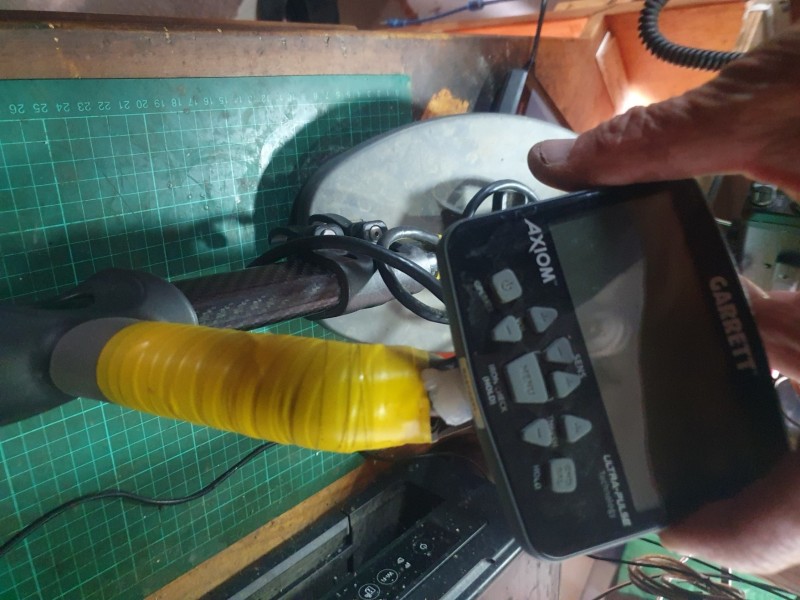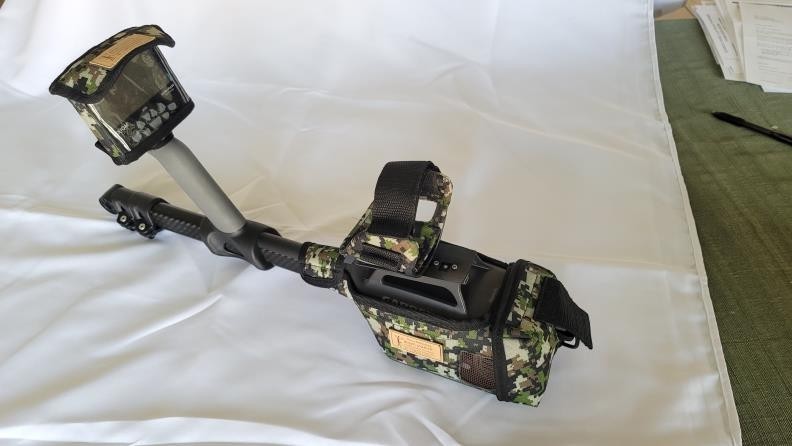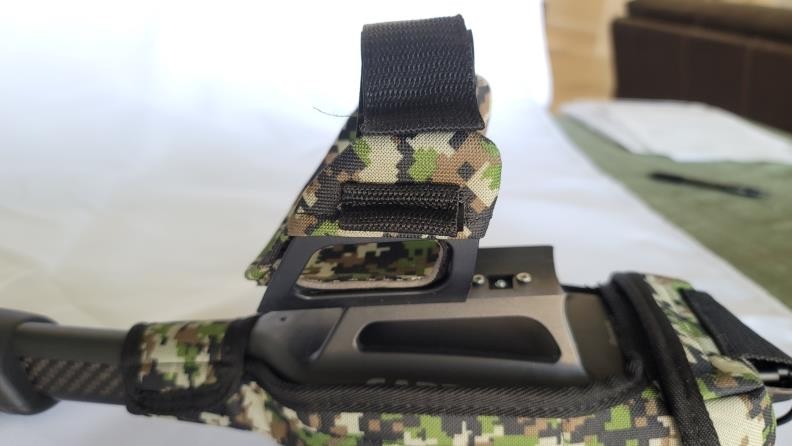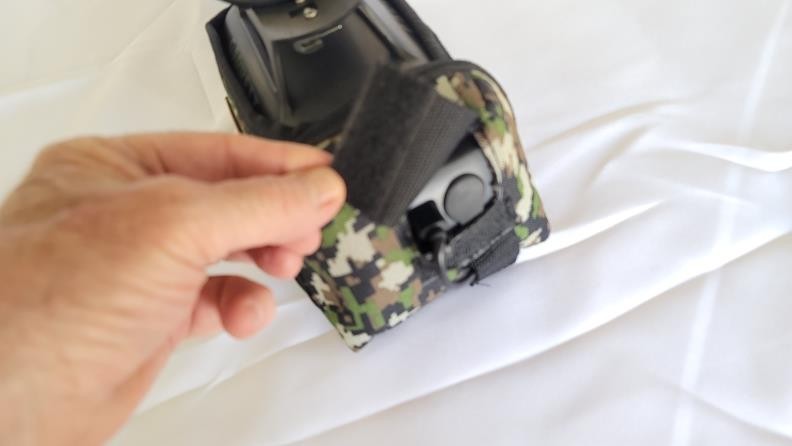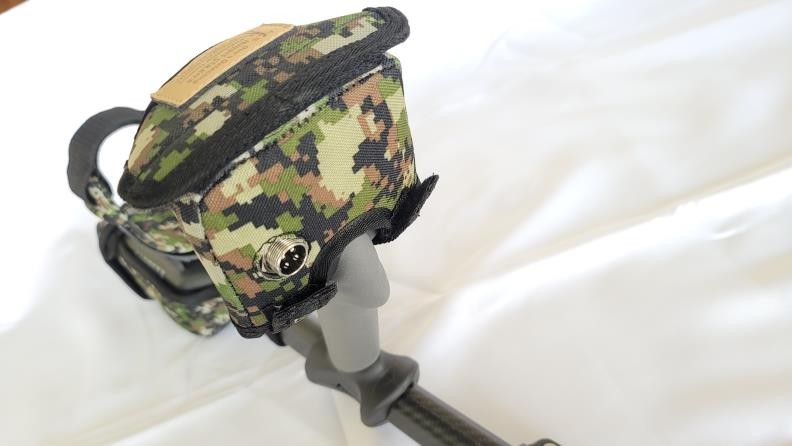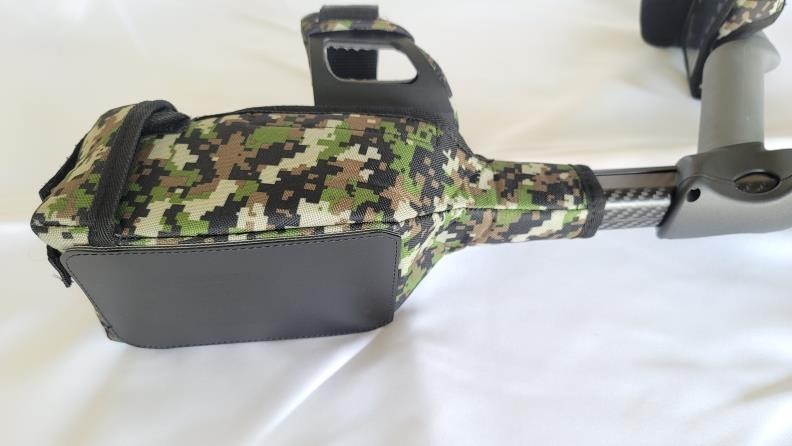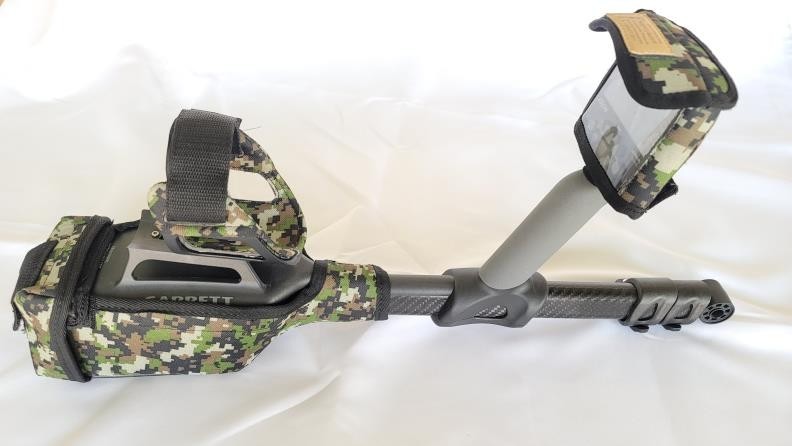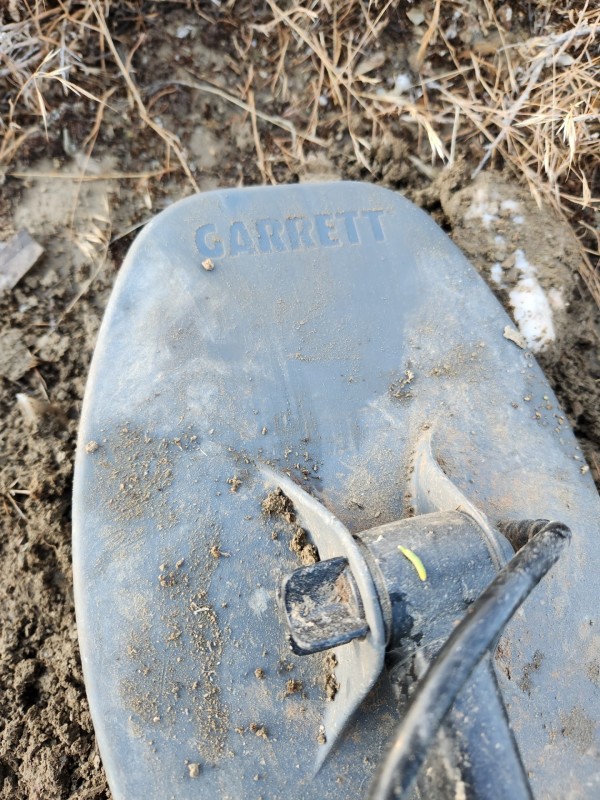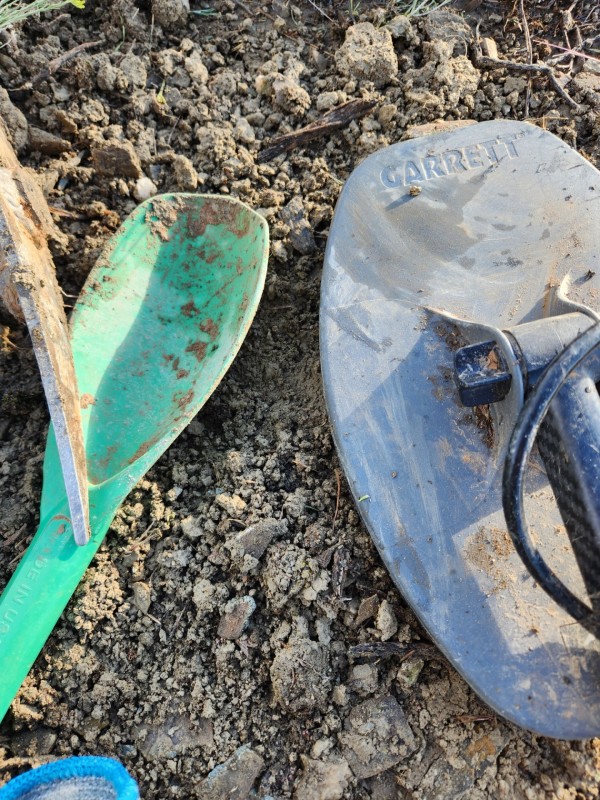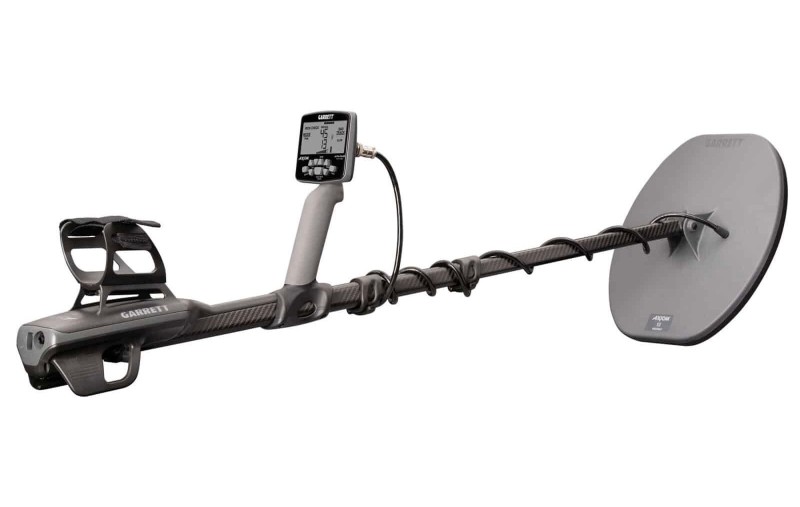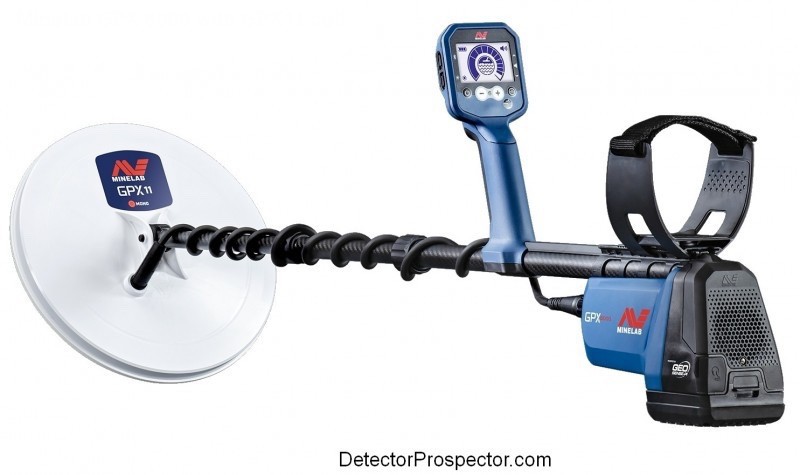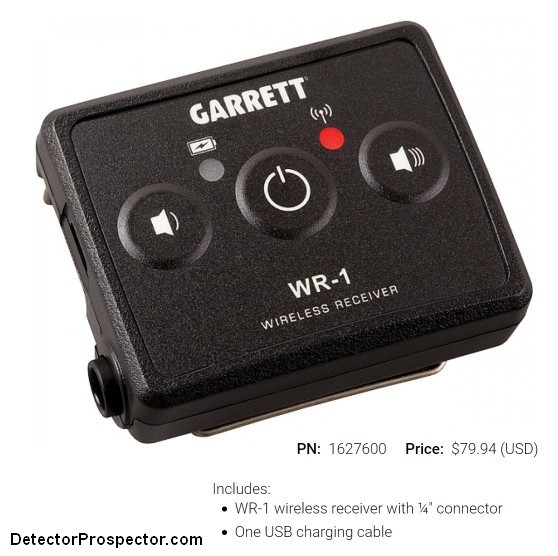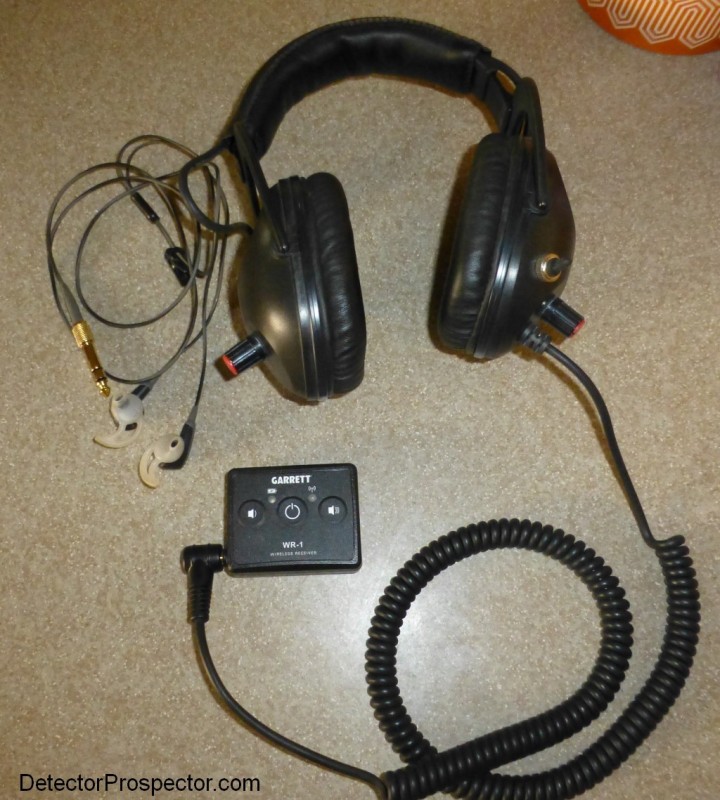Search the Community
Showing results for tags 'garrett axiom'.
-
I realize I am late to the party as far as the Axiom. Some of this may have been said already. I haven't read every word or post about the Axiom on this forum yet. I want to say first that I have had a love hate relationship with the GPX 6000. I realize it may have been rushed to release during a world-wide pandemic. So were some other detectors. However, as much as I like the GPX 6000, it has always seemed to me to be a thrown together detector on the outside with some great software engineering on the inside. The flimsy stock coils, weird wobbly twisting won't lockup shaft system, uneven weight distribution, and the well documented audio/speaker/EMI issues just continue to make me wonder how many corners did Minelab have to cut on this detector. It still detects really well, no complaints there, when it can handle EMI conditions and is super, even hyper sensitive to small sub gram targets. I just needed something else that I can trust on deep coins and relics in high iron mineralization and at a saltwater beach along with some rudimentary iron discrimination. So, the Axiom. This is the first pulse induction detector that I have used that seems to be put together from the ground up, from the tip of the battery compartment to the toe of the coils with a complete design in mind. No "hey lets throw this component from this detector and this component from this detector and that battery compartment we already have with this shaft system" kind of mentality and cost cutting. It is a complete design build aside from the use of Garretts Z-Lynk wireless system which I simply do not care for and the shape of the control box which resembles the ACE Apex. I am super impressed and very delighted to see this from a detector company. Nokta came close with the Simplex/Legend but many of the exterior materials used for those two very budget minded detectors are nowhere near the quality of what is used on the Axiom and I would not expect them to be. I am still learning this detector after only a few days. It will take me awhile. What I can see immediately is that it is plenty sensitive to small sub gram gold, it can handle difficult ground conditions well and it has just about every operational feature I need laid out with a very uncomplicated user interface. The Axiom reminds me a lot of the GPX 4000 to GPX 5000 but with a much less complex and hard to access user interface. I can easily see that the Axiom will be much more suited to relic and deep coin hunting than the GPX 6000. I did a lot of testing on about 40 common relics with the 6000 using all of the timings and I never could find a consistent, easy to follow pattern (easy for me anyway) when changing from Mono to DD coils or even changing from Normal to Diffucult using the same type of coil as far as low-high-low or high-low-high audio characteristics. The Axiom does not have this issue. So far it has been very consistent in my preliminary testing on a few common relics and US coins. I am still trying to get used to the 11X7" Focused Core DD coil that came with mine. It is definitely different and I will keep studying Steve's remarks about it. I really like the iron audio discrimination feature that works with DD coils!!! Steve, I know you helped with both the GPX 6000 and the Axiom. Thank you very much for all that you did on these PI detectors during their design and well before that too.
-
Last summer I shot a video with the Garrett crew, with a concise set of tips for helping new Axiom owners get started, and a focus on nugget hunting. In that video it was very short and easy. Turn detector on, and while using default settings, set sensitivity to max, and a few quick pumps to manually ground balance. EMI cancel as an added option if needed. There video is below, and still very much worth watching. But things have changed dramatically with the settings, so I now have a new set of recommendations. Simply put, the Axiom went on steroids after my feedback from my Australia trip. Overall gain and sensitivity were boosted dramatically, and the ground balance system further improved. Before, you could pretty much run the detector at full out sensitivity anytime, anyplace. Now, you most definitely cannot do that! I hope my old video does not end up hurting some new buyer experiences, and hopefully an updated version will be released. Regardless, you will be getting far more detailed information in this post. The sensitivity control has eight settings, and used to have a default of 6. Before, you could just go to 8 and call it good. Now, the new default setting is 4, which is in reality even higher than the prototype setting of 6. There has been a very large jump in gain, with the highest settings pushing the hardware to the limits. The sensitivity control is basically a post processing audio boost. It increases not only target signals, but all audio signals. The system is designed to try and treat target audio preferentially, but the fact remains that increasing the sensitivity control adds more “noise” in the form of ground feedback, hot rocks, and EMI. The number one goal of new owners while learning the Axiom should be smooth, quiet operation. I promise you that you will not get that if you run the sensitivity too high! My basic recommendation is new owners is to stay at 4 until you learn the detector. Do not do what the video says and go to max!! Experienced PI operators will probably be happier at 5 or 6. That’s subjective, and the pros will stay put, or go lower, or higher. But in general I found 6 worked well for me, but remember, I like running on the hot and noisy side. Settings 7 and 8 should be in bright red, like the red zone on your cars RPM gauge. You should only go there if you know exactly what you are doing. These settings are not intended for general operation, but for user indicated specific situations. They will make the machine noisier, and so the operators ability to use ALL the other settings, and the proper coil, will determine how useful these redline settings are. For new operators, new owners, everything depends on EMI and ground conditions, but look for a quiet, stable setting. It is a fact that target signals usually drop off slower than the “noise” signals, and by eliminating the noise, you will make targets more distinct, and easier to hear. A test target can be extremely helpful in adjusting the control. Make the target as distinct as possible to your own ear. Turning the sensitivity up will make the target sound off louder, but go too high, and you will get lots of other signals. Trained ears can separate these signals from target signals, which tend to have a distinct sound all their own. But to new users, it’s all just noise, and everything might sound just like a target. False signals, that tire the operator with mental processing, and possibly holes dug where nothing exists. Time wasted. Many operators will find they prefer the setting to be at moderate levels, with the detector basically silent, unless a genuine target sounds off. Some pros will prefer this also. There is no right or wrong in all this, no magic canned settings. Different people use different methods, often with similar results. The new default setting of 4 is what would be considered a “safe” setting. It may very well suit some pros quite well, Some experts prefer quiet operation, and so may find 4 or no more than 5 to be their preferred settings. Some may tolerate noise very well, and choose 6 instead. In general 6 worked very well for me. People who know me, know I like pushing the sensitivity very high. Axiom is a detector I like, because it makes me find my limits, and even I am finding out the need to finesse the setting more than I can with other machines. So back to sensitivity settings 7 and 8, the Redline Settings. What I mention below is very important if you attempt to use them. Do not expect automatically that you just can and all will be well. Going right to these settings may do nothing but make you unhappy. You need to understand the machine and how all the settings and coils interplay to get the most out of the top end. However, even the default setting of 4 will benefit from these tips. For instance, if you are in an area free of EMI, higher sensitivity is more available. Less variable ground is more amenable to high sensitivity. DD coils can tolerate higher sensitivity. Small coils tolerate high sensitivity more than large coils. The other settings now matter a lot more. Before, the machine ran well with all the others settings at default. Now, they will come into play far more often, and you need to know what you are doing with them. The Speed Control is absolutely critical for operation at the highest sensitivity level. The default Medium Speed is fine for general operation, but if you are pushing the sensitivity up, Slow will run quieter, and you will absolutely benefit as an operator by also slowing down yourself. VLF users go too fast, period, for general PI operation. If you are patch hunting or just desire to cover ground, run the defaults. But if you are really wanting max performance on a hunted patch, nothing will benefit you more than just going slower! Coil to the ground, low and slow, can’t say it enough. The Slow Speed mode is made for this type of hunting, and it really helps with higher sensitivity levels to use the Slow setting, and move at a crawl. The Timing setting is another great example. There are four timings, Fine (Default), Normal, Large, and Salt. In general, each successive one is introducing longer pulse delays, which tends to lower overall sensitivity to ground, hot rocks, and smaller targets. The Salt setting eliminates salt signals, but eliminates weak gold signals also. See this link for details. Before, I could run Fine Mode at full sensitivity of 8 almost anywhere. Now, Normal becomes a more viable alternative setting, as it tolerates a higher sensitivity setting. Each successive mode can lower overall sensitivity, but can now be offset more by running a higher sensitivity control setting. It’s very much like a salt and pepper thing, and has to be adjusted to taste. The key thing to do here is not forget about the alternative modes. Again, a test target, like a small nugget or small piece of lead, can really help here. Don’t just stick with Fine Mode. You might discover that Normal, with the sensitivity one notch higher then what you were using with Fine, works better in your particular location, especially if larger gold is the main goal. Dry beach hunters and relic hunters in particular may benefit from Normal or Large, but with higher sensitivity levels than would be used with Fine. More details on finding the proper Axiom mode. In general, both EMI canceling and proper ground balance are more important at high sensitivity levels, and both may need to be done more often, depending where you are. Hot rocks get boosted at high sensitivity, and the Garrett hot rock window mode will be more important than ever, for dealing with those oddball rocks. To repeat, coils matter more at the highest settings, with DD coils in general tolerating higher sensitivity. The background threshold tone will increase at high sensitivity levels. Here is a weird trick people can experiment with. Run sensitivity 7 or 8, but run threshold at -8 or -9. This suppresses the threshold entirely, but with the sensitivity control maxed you might get some breakthrough chirps. So sensitivity 7 or 8, threshold -8 or -9. Any combination of those might be the magic. It makes the Axion dead quiet, but get over a target, and BANG! you will know something is there. Could be the ultimate setting for a rank newbie, making the Axiom act almost more like a silent search VLF. But you pros may discover it has uses also so do give it a try. I’ll end with my favorite example of my using the highest sensitivity setting of 8. Shallow ground, tiny gold. 11” DD coil, Fine Mode, Sensitivity 8, Slow Speed, and move at a crawl investigating the tiniest of sounds. It might be too noisy for you, if so, lower that sensitivity. And to wrap up, that’s the answer in general. If you think the Axiom is too noisy, if you are getting too much in the way of false signals, EMI, erratic operation, you name it - LOWER THE SENSITIVITY SETTING! I’m serious, if you don’t want to get a “what are you, stupid” type response don’t complain the Axiom is noisy. It’s only noisy if you make it noisy, and I promise you can. That’s by design, that’s how you find the edge. Nothing is more irritating than people who complain about problems they are creating for themselves. Lower the sensitivity! Look at it like this. The Axiom is your car. The sensitivity setting is your gas pedal. Would you want a car that you could drive with the pedal to the floor all the time? Set to be safe on corners and rough roads. Can’t go faster than 35mph no matter what? That’s the way a lot of detectors get designed. Or do you want the car to be able to go to 120mph, even though that’s not safe, or even legal? Do you want passing power? Do you want to be able to open it up on the freeway and maybe speed a little? The Axiom sensitivity control is like the gas pedal on a sports car. Press it down too far when you should not, you will crash and burn. The top end is there for the rare circumstances where they make sense, or for those operators who can run at higher, noisier levels, and do the mental processing required to pick target signals out of the noise. So one last time, and repeat after me, when in doubt, if something is wrong - lower the sensitivity!! I do hope this helps some people get started out right. The Axiom is a wonderful detector with the right driver behind the wheel. Take your time to learn it properly before you go racing. If you do so you will learn to appreciate it like I have. Thank you Garrett for making this happen, and for letting me take my swings at you, and taking them with good cheer. The final result is better because of the effort. From a full reset / factory default, my steps are: Use default sensitivity. The Axion default sensitivity of 4 is about the same as other detectors maxed out. New users may want to lower to 3, more experienced operators go to 5. Only go above 5 if you are willing to deal with extra noise or have more experience with the detector. over-driving the sensitivity will be the number one mistake made with the Axiom. Volume so that loudest target is not too loud - protect your hearing!. Wave over pick and set. If using headphones, set detector to full volume, and adjust headphones using their own volume controls. Set threshold to suit, for me a bare tone, others may prefer quiet. Go into menu and change Speed from default Medium to Slow (it’s smoother/quieter) Do a ground grab ground balance. Optional. Once all other settings adjusted, do an EMI cancel if it seems necessary. Start detecting, keep the coil low, go slow. Dig all signals, but in heavy nails, low chance of really large gold, focus on sweet high tones. The original tips video below, with now obsolete settings tip for the sensitivity control. Garrett Axiom Quick Facts, Owner's Manual, Etc.
-
As the header reads picked up an Axiom played around a bit on my 1.6 acres started out with the 11x7 Mono and could not get it to run stable at all, no power lines above ground or below close to where I was playing, cell phone was not in my pocket, no metal in my shoes or in my pockets set up my threshold to where it was barely heard, set the tones to my liking Ground Balanced, performed frequency shift did both the GB and frequency shift several times, tried lowering the sensitivity, sensitivity at 1 and 2 nothing would smooth it out, tried switching from slow, medium and fast, also tried going fine,normal,large, and salt with the 11x7 Mono, nothing helped can not recall what my Ground balance numbers were with the 11x7 Mono I switched coils to the 13x11 DD and went back through adjusted the sensitivity to 2- 3 was even able to push it up to 5 before it was getting a little to sparky, it ran smooth as silk at a setting of 2 and 3 on the sensitivity, and even 4 on the sens was usable but I kept it around 2-3 my yard has a extreme amount of magnetite and heavy salt content which is what I believe was giving the 11x7 mono fits, this is my theory anyways, swung over two small test nuggets that I have thanks to Reese Townes, have not weighed either but they are tinny with the 11x7 mono I could not hear those two little nuggets other than a couple little chirps here and there, because of all the ground noise I was getting, but with the 13x11 DD those two little nuggets were very audible and could be heard very well with the rise in the threshold two little bloop, bloops the 13x11 DD throws the balance of the Axiom off quite a bit though but the weight is manageable, I am going to go ahead and pick up a 11x7 DD, just to get the balance back and have when situations occur that the 11x7 mono does not work or cannot be used for a first high end PI I am pretty happy with my purchase and I got a pretty good deal on it, it will take some learning like any other detector but I will get there I have been reading all the threads and post that pertain to the Axiom, and appreciate every ones post about the Axiom especially Mr Steve H as it helps with the learning curve of the Axiom I did swing over an area in my yard with the 13x11 DD and got a booming Woo Woo hit, that I will dig up in the future as I have to take it easy because my back is a bit jacked rite now in fact I ended up in the hospital last Saturday because of a messed up disc in my right lower back, but I am looking forward to my new adventure with the Axiom
-
I do not own nor have ever used either detector but I am considering both. Other than price I know nothing. Read a few older posts & reviews on the SDC 2300, it may be a better fit for the steep brush covered ravines of the Sierra west slopes along with the cracks and crevices in the drainages. Currently use a White TDI SL with a 10x5 folded mono coil. I have hear that the SDC 2300 8” mono coil is hot around the edges. I like the specs on the new Axiom overall but for me the current coil selection sucks. Both detectors fold up or slide up compact for packing. The 2300 may be a bit on the heavy side compared to the Axiom but is manageable. Already have the Garrett Z-Lynk wireless transmitter plus the 1/4” receiver for my headphones. What has been your experience with either detector? A lot of rain followed by a lot of snow fell out of that last storm system with more on the way. May turn out to be a good year for spring runoff. Have Great New Years Day
-
Hello everyone! Just curious on how you guys are protecting the screen? I was thinking maybe just like a phone screen protector just cut to size. Heavy pans!!
-
As explained elsewhere my metal detecting is winding down from my glory days. I will never quit detecting, but it is a more casual close to home thing going forward. With that in mind I just don't need the dozen detectors I usually have had banging around the house for most of the last couple decades. I had already weeded things down pretty well but job one was to stop getting new detectors. The last new detector I added to my mix was the XP Deus 2 a couple years ago. After disposing of other models, like the Tarsacci for instance, I was left with the following: Minelab Equinox Garrett Axiom XP Deus 2 White's DFX For what I do I'm pretty satisfied with the Axiom as a general purpose PI so that's settled. The DFX sports a Bigfoot coil, and I own the machine as much to run the coil as the other way around, so it is not going anywhere. In fact it might become my most used VLF soon. So what to do with the Equinox 800 and Deus 2? The Manticore was really looking like a replacement for both. I can't really get enthused about the XP way of things. People rave about the light weight being a real factor for them, but I don't consider weight to be an issue for me with any detector weighing under three pounds. At the end of the day coils are a big deal for me, and I don't like proprietary limited coil options. Wireless coils leave me cold. People can argue with me all they want but they are wasting their time. I like wired coils, and I lean to detectors with third party coil options. So it is the coils that decided it for me. Minelab took too long with Manticore coils and now I just don't care any more. I'm also peeved XP has withheld the 5x10 coil from Deus 2 owners. My Equinox 800 I have a 6" round coil, the Coiltek 5x10, the stock 11" coil, and the Minelab 12x15 coil. XP has nothing similar to offer in way of coils. Nor does the Manticore. Plus I have custom rods for my Equinox perfect for both compact backpacking and for beach use. I even have an S rod that I have yet to use. The icing on the cake is a set of custom Tony Eisenhower underwater headphones I really like. Would I get rid of all that and keep the Deus 2? No. Would I trade all that for the Manticore as it exists right now? No. So I think I have after ages finally weeded it down to three detectors. The Deus 2 will find a new home. And I am left with... Garrett Axiom - my most used detector for gold prospecting and beach detecting Minelab Equinox 800 with full accessory set - do it all coin, relic, jewelry, gold nuggets, you name it White's DFX with Bigfoot - Park jewelry use almost exclusively Maybe, just maybe the Manticore will tempt me again in a year or so, once the software bugs and coil drought get straightened out. But after 50 years I feel like I have got off the new detector merry go round. There really is something to be said for using a machine you know inside and out, and fact is my Equinox talks to me. The Deus 2 still speaks French and frankly I just don't care to make the effort to learn French. Too old to learn new tricks? Maybe. The main thing for me is I won't waste any more time thinking about this machine or that machine and instead just focus purely on using what I have to best effect. Compared to what I started with 50 years ago I'm drenched in fabulous technology I once only dreamed of, so now matter how I look at it I'm thrilled with the detectors I have now. Minelab Equinox 800 with 6" coil and telescoping rod White's DFX with Bigfoot coil Garrett Axiom with 7x11 coil Equinox 800 with 12x15 coil and steveg counterweighted rod The perfect pair? Axiom 7x11 and Equinox telescoping 5x10
- 45 replies
-
- dfx vx3 v3i
- minelab equinox
-
(and 1 more)
Tagged with:
-
The first thing you want to do is look on the back cover to see the man Steve H. with the Axiom in his hand. It says Novice To Professional- Garrett Finds Gold. Chuck
-
I was detecting some old mining piles that were pushed around years ago and was able to score I really nice chunky Gold Specimen with the Axiom. Some after pics of the quick spit washed showed a nice find for my efforts. Globby gold on one side. 13" MONO coil on the Axiom while using Garrett AT Carrot Pointer. Beautiful. . 2.17 ozt Sucking the juice out of it. Hey you only live once right.🤣
-
Still not knocking the Axiom, disappointed it didn't work for me in our ground in Australia. At start of season took it out for a week, was eager to try it on a little spot I had gone over and over with the Z7000, concentrating heavily around where I had picked up before, but no gold, thought well ok and moved on to other parts of the property. Put in good hours for the week, for no gold except for the normal boot tacks, shotty pellets and bits of rusty tin. Went home disappointed, but confident the Axiom would find gold, I just didn't walk over it? The Axiom was good to use tuned well and excellent battery life. Found the Axiom very over whelming on hot rocks (two types) and ground noise. Yes, I know about the hot rock window and used it. I have used the 6000 it gets hot rocks and ground noise too, but not like the Axiom does in our ground. Three weeks later went back out for another week, three days into the week and nothing, teamed up with a friend with a 6000 and went out to compare, the 6000 picked up the first target, friend called me over to check the undug target, I couldn't hear it!! 2" down it was a bit of gold! "What the - - - -". A bit further on another target, a bit of steel on the surface I couldn't hear it, well that blew my confidence out the window, I wasn't going to push it around any longer. I still don't know what happened that day, the Axiom can pick up my 0.065gr test piece as good maybe slightly better than the 7000 in an air test, the 6000 is better again. The next day I was going to use the 7000 until a friend on the property turned up with his 6000 for me to use for the rest of my stay (never used a 6000) but had seen them in use. Well you guessed it took it to my 7000 hammered spot and got two bits straight up, one about 3' from an old find and another tiny bit about 6' from an old find. The rest of the time on the property went to different spots for 4 days while I had the 6000 making the most of it and found small bits every day. I now had my confidence back. I don't think there was anything wrong with my Axiom. Just don't think it's suited to our ground and have since sold it, at a considerable loss and put that down to experience. A bit long winded, but that's our it was. Cheers, peterinaust.
-
Just back from a mission and had a wee problem with the head/LCD trying to part ways with handle, seems to be held in by a wad of silastic/silicone. (as per photo) This happened during travel in my overhead cushioned detector tray built into my Troop Carriers original 1986 model to current Troopy. The detector is still working AOK and will not be returned for warranty claim at least until end of 23 season, instead whilst back in my workshop will construct a bracket to hold head/LCD more securely. I also have been reassessing my judgment of its performance vs the 6K and now am of the opinion there is nothing between them, whereas before I have considered the 6K has a slight edge. I believe this is because I have through experience with settings obtaining better depth and sensitivity than when I made my first judgement. Am very impressed with its performance particularly amongst creek rocks where there is a considerable air gap between coil and ground. Please as this threads author I am not interested in this developing into a negative Garret or Manufacturers Bashing Thread. The Axiom is a positive gold magnet magic detector.
-
“Based on gold nugget performance only. I don’t care about the ergonomics one way or the other. Will the Axiom for sure make lots of finds I can’t possibly make with my GPX 5000? Should I sell my GPX to get the Axiom based on that assumption?” That’s the question that was posed to me. And my short answer is no. The Axiom is in the same general ballpark as the GPX 5000, but there is no particular reason to think its performance is different enough to make a real difference. What one will normally find, the other one probably will also. Though coils are a factor, and at six coils versus over 100 the GPX has a definite edge. I’d bet on a 5000 with 18” round mono on a four ounce nugget at depth versus Axiom with 14”x16” mono every time. On small gold things get more interesting, but a 5000 with a 6x8 Sadie coil is no slouch. So while I’m an Axiom fan, I’m not telling any GPX 5000 owners they need to switch based purely on performance. Especially if you are very comfortable with the 5000 in general. If you own no PI at all and are looking for one or the other, well, that’s a more interesting question for sure. I lean Axiom myself if that’s the case, but if a person is only interested in multi ounce gold at depth, well, it’s the coils again. It just depends on the person and the situation as to which might be the better pick. If anyone does go from any of the battery on harness Minelabs to an Axiom it would be great to hear how it’s worked out, one way or the other.
-
Some of you may have noticed that the Detech USA website has been unavailable for quite some time due to supply chain issues. This does not bode well for those of us who are waiting on after-market coils for the Axiom. I went ahead and purchased the Garrett 7x11 DD, which I can use in the gold fields. I took it out for 3 test runs at my local beaches recently, and now can say that the Axiom is well-suited for beach work- wet or dry sand. I ran NORMAL, MEDIUM, FIXED GROUND, THRESHOLD @ -4, SENSITIVITY=2. No problems with moving water, no problems with EMI, which was acute in all 3 test areas. At sensitivity 2, the weak, small junk targets were not "lit up" and registered as high-low signals. Most twist tops were high-low, with only a few types sounding off as low-high. Other high-low targets were foil, wire ties, and other small junk that falls through your scoop. Low-high targets found were lead, tent stakes, all coins, aluminum pull tabs, aluminum screw caps, junk rings, junk jewelry, a few twist tops, gold ring (test), silver ring (test), and the bane of all PI's- deep iron. I will be playing for keeps next time out and only digging low-high signals. Plenty of power at sensitivity 2, and more than enough to draw upon if you need to search for those faint signals in a hunted out patch. -Jerry
-
Here is my dynamic duo. If I had to own the least number of detectors possible myself, this is what I would settle on. I can basically do anything with these two detectors. Gold nuggets, coins, jewelry, relics, beach & snorkel work, you name it, this has it pretty well covered. You can argue some other detector might be better than one of these for this or that, and I'll not argue with anyone. But the Axiom plus my Micronox (trademark pending ) weigh in at a hair over 7 lbs total, and obviously take up next to no room in my rig. Various Micronox Options Here
-
-
Used the Axiom for the first-time last week, in Georgetown area North Queensland Australia. Happy with machine, but no gold! I was frustrated with the amount of hot rocks and ground noise, this was when using tracking off. The ground balance values were staying pretty constant, no big changes when moving along. So tried auto tracking slow, med, and fast all helped but I was worried I could track a target out. Started out with sensitivity of three and slowly worked up to 4 and 5 machine ran quit smooth at these settings. Normal mode seemed a bit smoother again. So what I am trying to say is how better to deal with hot rocks and ground noise? I do like the Axiom but not trusting it yet. Any clues please. PS meant to so was mainly in Fine mode and trying Normal but mainly in Fine.
-
I just spent a short while at the famous Nevada Rye Patch over Monday evening and into Tuesday afternoon. The desert this year is extra beautiful and green in the summer with all of the past recent wet weather. I hoped to stay dry doing some detecting and perhaps find some Nevada gold. Well, I at least completed one goal, but failed on the other. I had to wait out a rainstorm for about an hour after a late day arrival. I grabbed my ML GPX 6000 with Goldhawk 10x5 coil and gave the area a test. There were still some puddles on the ground and the top several inches of ground were soppy wet. The 6k is a bit noisy, even with the 10x5 coil, and the saturated ground added to the noise. As it would soon be dark, I decided to pack up the 6000 and use the Garret Axiom with 11x7 mono coil the next day, as I've been able to get it to run more quietly in some tough areas due to the added controls and lower sensitivity levels it offers. The next morning was overcast, but the puddles were mostly gone. After a bit of fiddling to lower audio on the Axiom to 4 threshold, 2 sensitivity and volume 14 while using my ML Koss 1/4in headphones, I was off detecting. Since Rye Patch has been very heavily detected over the decades, my experience has been there aren't too many signals to expect, so I was happy to get my first within 5-10 minutes. I got a faint, but repeatable signal near a sagebrush bush, even with a low sensitivity setting of 2. I figured it would be a shard of bullet or sliver of iron can, but nope, it was a caliche-encrusted, very coarse nugget down about 3 inches! What a way to start the day with a success. I figured I'd cover that area even more slowly and after finding 2 tiny slivers of iron, about 30 minutes later I got an extremely faint signal. A few scrapes and it was in the pile and turned out to be an very tiny nugget! This one was about sesame seed size and also very coarse. The Axiom with its extreme stability and almost no falsing with the audio/sensitivity lowered, still hit that tiny target, very impressive! I renewed my efforts the next 4-5 hours, since it was a race against time. The clouds darkened quickly and it began to look like rain coming yet again with huge dark patches of clouds building nearby. I did dig some other small trash signals and a couple of recent bullets, but no more gold. As the first rain of the early afternoon started to soak me, the thunderstorm hit HARD and I decided it was time to head out. I'm glad I did because the main road in/out had some flash flooding and unfortunately is going to have considerable water damage for a while in spots. People with 2wd vehicles might have trouble passing in the near future. I was glad to finally score some Rye Patch gold after being skunked there in the past. I can now check off finding Nevada nuggets from my list. Low and slow, as others often state, was key, as was making my Axiom as quiet and stable as possible to discern solid signals from saturated ground noises. Also, determination was key. I told myself before the day's hunt, if signals are there to be dug, then there can still be gold, and sure enough there was.
-
I'm planning on my yearly trip to the Florida Treasure Coast in November and in the past have been using my Orx and Nox. This year I'd like to try something different in the way of a PI so I'm considering buying the ATX or Axiom. Curious to know if others have used either one between Melbourne and Fort Pierce. I'm thinking the ATX would be more robust to the elements. Thanks.
-
I had a 4500 for a few years I sold it and bought a Axiom because I thought it would be better. it definitely is lighter and that's one thing I like. I have tried fine gold full sensitivity and I can't hear my little gold test piece that my 4500 would sound off on. The other problem I noticed is a larger target like a bullet would only sound off when the heal of the coil was over the target. Iam using then mono coil. Are there other Axiom user having problems?
-
-
Steve: I live in Phoenix area, 75, retired and bored. Decided to get out and learn something that is enjoyable, challenging, outdoors with plenty of exercise. With at least a 1000 steps a day. Searching for gold nuggets has always been a bucket list event. Researched gold detectors and wanted to achieve better odds of detecting in areas in Arizona that have been prospected over and over again. Research, limited by my knowledge, led me to the new Garrett Axiom and found that you are the best advocate of testing and tweaking this new detector and have read a lot of your post while doing my research. Minelab seems to be superior with the 7000 I felt the Axiom was my choice and less expensive than the 6000, plus offered more advance features. I decided on the Axiom and bought the package with 11x7 mono and 13x11 DD and added the 16x14 DD. The 16x14DD in the event I can visit the Mojave desert. Plan to learn how to detect using the 13x11 DD. Not doing this to make a living. But would like to find what others may have passed over due to the limitations of their detectors. Just want the exercise, be able to enjoy seeing parts of the state that everyone misses out on. Looking forward to this venture but going to start by learning how this detector works. Joined a local prospecting club to access areas where I can legally detect and meet others that have detected for a while. Plus plan to detect more often than others that can only go on weekends. Also, not really interested in dredging or panning. Just joined Detectorprospector as a new member and will continue to monitor your research and others who have also bought the Axiom. Really appreciate your insight as you and others with updates about your findings, also. Wish me luck.
-
The only issue I have found is the iron check feature when using a DD FC coil is that sometimes it responds to non gold with it’s buzz but sometimes goes to the menu setup negating the hit completely. I’m setting up properly and continue moving over the target. Some times it works. Sometimes it doesn’t. Dig it up anyway when it says it’s not gold just to test the feature in during my introduction to detecting with the Axiom and it’s iron check feature, but don’t know what I’m doing wrong when I use the iron check feature. Any suggestions as to what I’m doing wrong.
-
Hi all - new to PI detectors and new to Garrett! A few weeks ago I purchased an Axiom as my first PI machine. Doing some backyard testing I got a lot of EMI interference so I went out a friend's rural block. As soon as he fired up his Nox 800 the Axiom went crazy. Is this normal? I figured worst case we just can't be within 10m of each other which is generally fine when detecting anyway. Is it just PI vs VLF? Or PI vs PI it does this?
-
Wow, I wish I had done this sooner! I got a Garrett WR-1 wireless module for my Axiom some time back, but never seemed to get around to giving it a spin. I use the external speaker most of the time, and the rare times I needed headphones I've preferred to plug in my Sun Ray Pro Gold wired phones. Not only do the Sun Ray have better audio quality than the Garrett MS-3 wireless phones included with the Axiom, but I never need to worry if they are charged. They are always in my kit ready to go. Most importantly, I like dual volume controls due to hearing loss in my right ear. I can use phones without dual controls, but prefer them when I have them. Let's call my 150 ohm Sun Ray Pro Gold as a 10 rating for audio quality. I'd rate the 8 ohm Garrett wireless MS-3 as included with the Axiom as an 8, just very good, not bad, not great. They actually are a good match for the external speaker on the Axiom, as it is hard to really say the headphones sound much different than the speaker, other than being closer to the ear and having sound exclusion properties for background noise. So again, I prefer the external speaker for most use because it has a LOT of volume. For anything else I preferred my Sun Ray Pro Gold. The only problem there is I do want to be wireless with my headphones. Being wired to the detector is a real pain, especially when I put it on the ground. Enter the Garrett WR-1 wireless module, a quite compact receiver for the proprietary Garrett Z-Lynk audio built into the Axiom. Z-Lynk is a 17ms high speed wireless option, much faster than Bluetooth, and being proprietary to Garrett, pairs instantly. Garrett even has a wireless version of their pinpointer that works seamlessly with the system - very nice! The only issue I have seen in that like many 2.4 Ghz systems the signal does not penetrate solid objects well. If you experience audio drop out with the MS-3, pay attention to the detector positioning when it is happening. Reversing the headphone on your head may help, as will setting the detector away or more ahead of you when it is on the ground. I just gave the WR-1 a test run, and I love it! I was worried that maybe the audio quality issue with the MS-3 was related to the wireless signal itself not transmitting the full audio spectrum. Luckily that is not the case. My Sun Ray Pro Gold sound every bit as good plugged into the WR-1 as they do plugged into the detector itself. This is really good news. It means you can go wireless on the Axiom with any headphone you want. I have a couple sets of wired Bose earbuds I really like for hot weather. They work great with a 1/8" to 1/4" adapter - the WR-1 is 1/4" unlike many Bluetooth wireless modules, since it was made especially for metal detector headphone options. Best of all, the volume can be controlled by the Axiom itself since the ear buds have no volume control. Just like the Sun Ray, they sound great with the WR-1, better than the MS-3. If anyone does have issues with headphone/detector positioning and audio drops with the MS-3, this eliminates that completely since you can place the receiver box anywhere. I just stick it in my pocket, but it can go anywhere you want it that the detector cord will reach. The icing on the cake is Garrett makes a WT-1 Z-Lynk transmitter than can turn any detector into a Z-Lynk compatible detector when used with the WR-1. I am ditching my slower Bluetooth transmitter box and getting a WT-1 for use with my other detectors. It's a great system, see the details here for all the various options. And yes, the Garret wireless pinpointer will pair simultaneously to the WT-1 so you get wireless audio from both the detector and the pinpointer through your headphones of choice. I'm saving the best for last. The WR-1 with USB charging cable is only $67.95 and for anyone wanting to convert other detector to Z-Lynk, the WT-1 transmitter with 1/4" adapter and USB charging cable is also only $67.95. Both can be bought together as a package with a nice carry case for $140.95 Anyway, I am totally sold on the WR-1 with my own choice of headphones as being the only way to go, and for any detector that needs it, I will use the WT-1 also. My old White's DFX just went wireless!




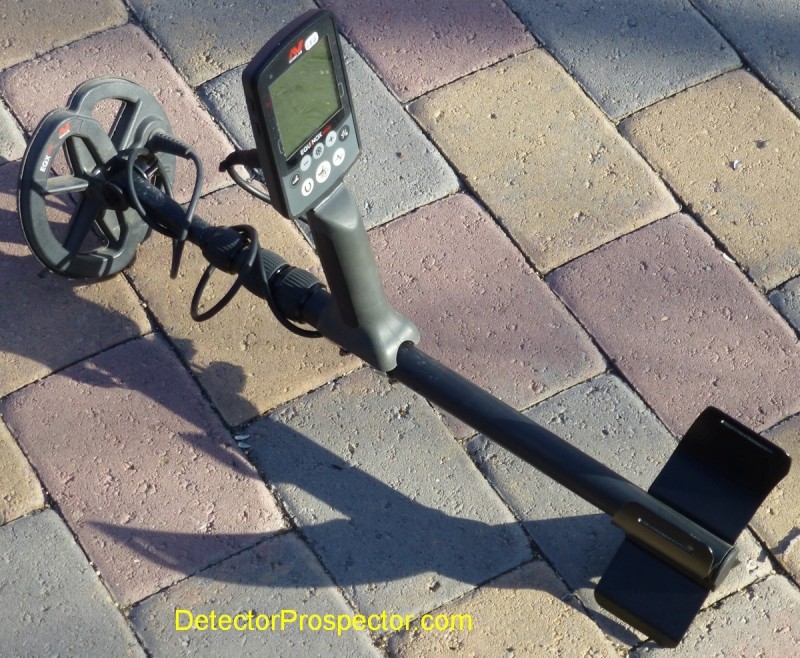
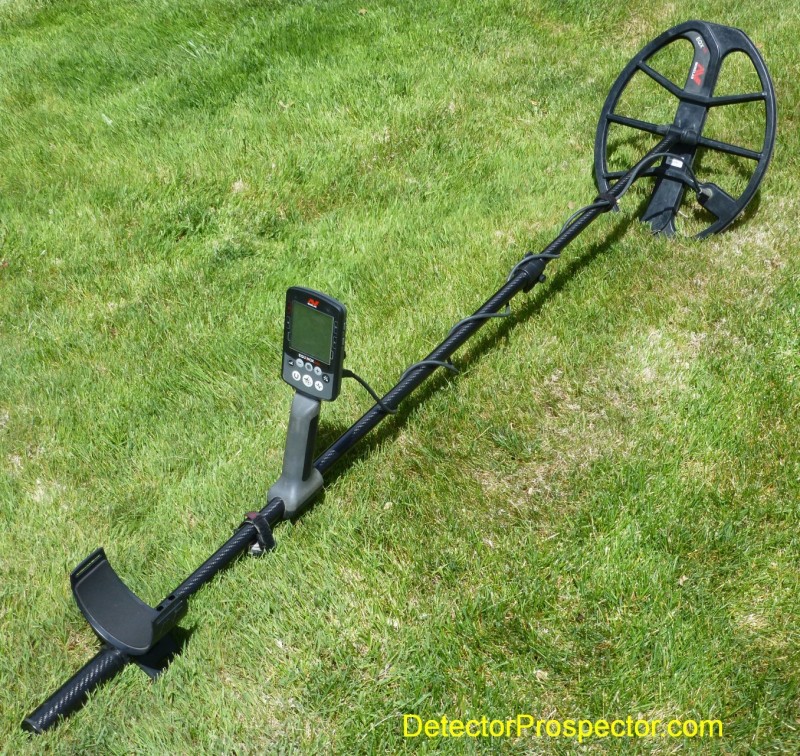
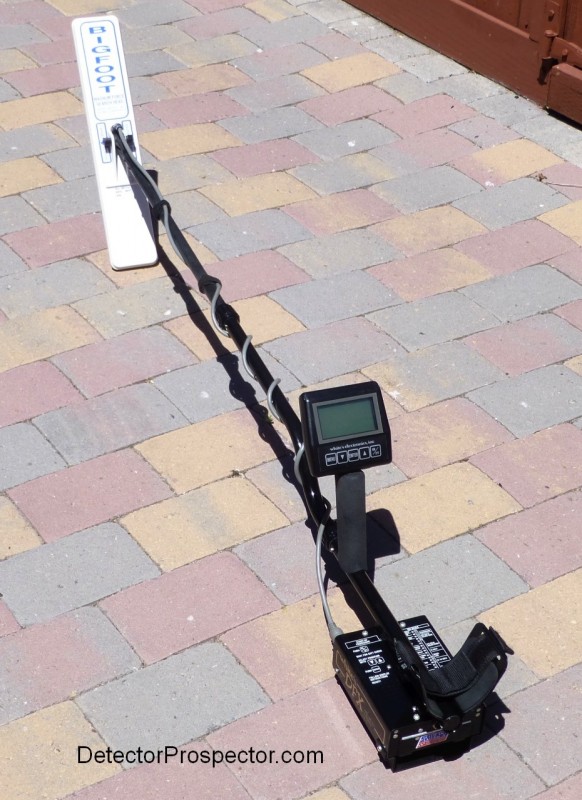
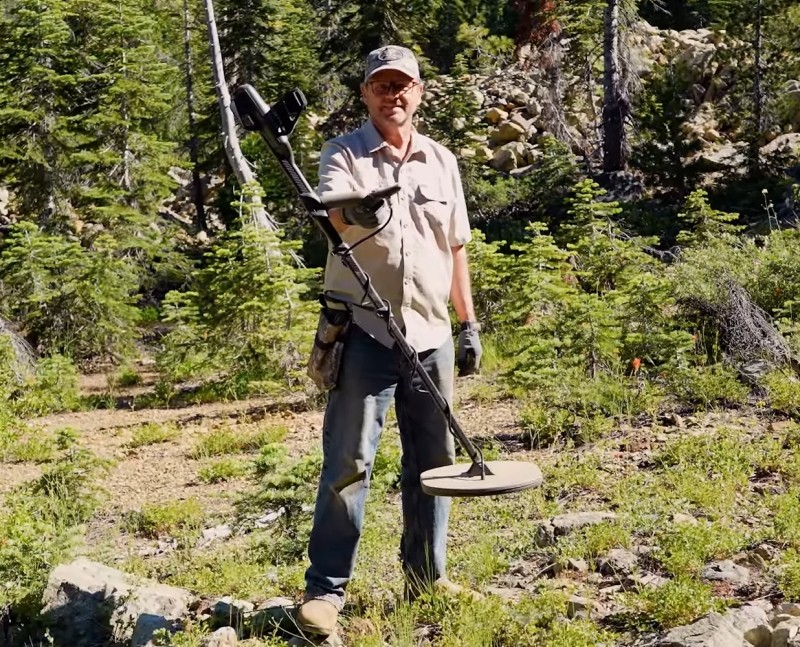
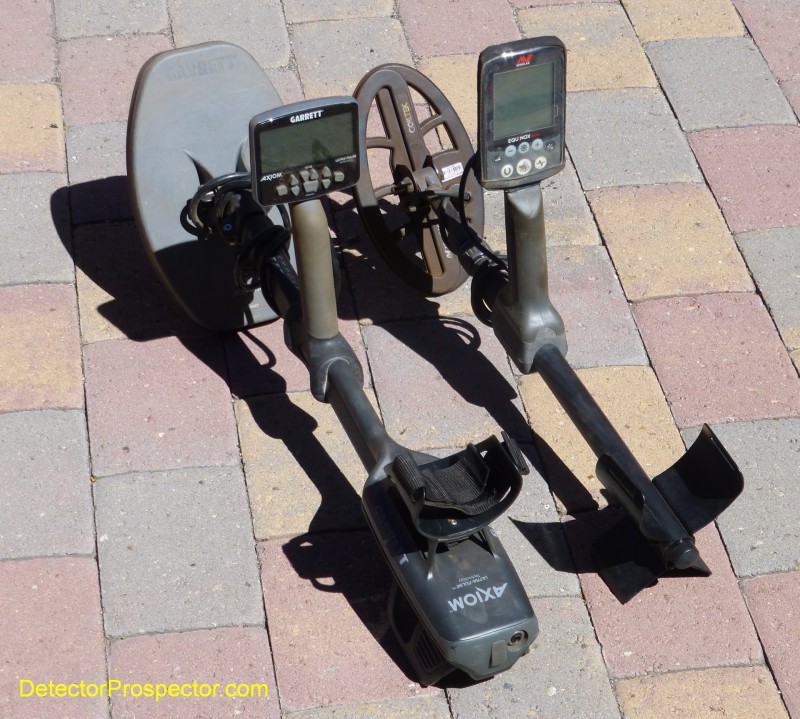


.thumb.jpg.a3e6a94e8322d1b7e16366ffabf05d26.jpg)
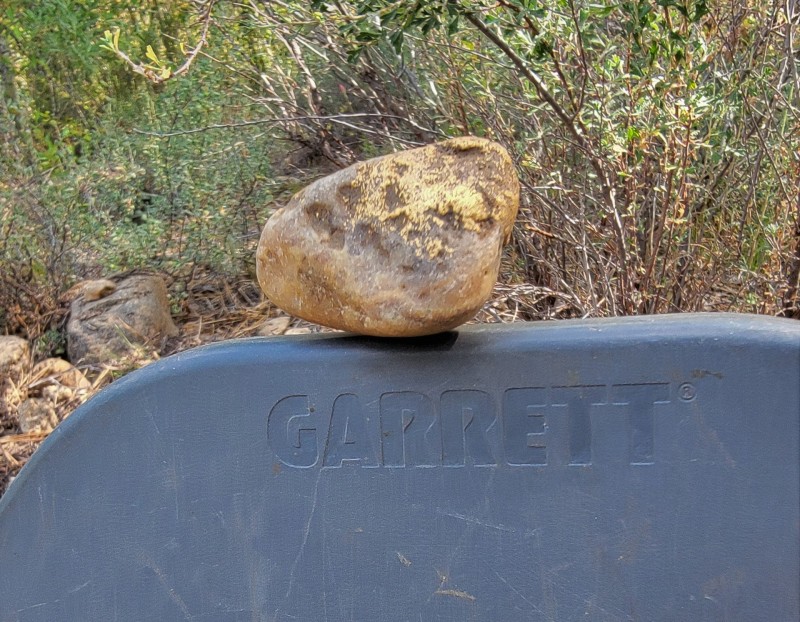
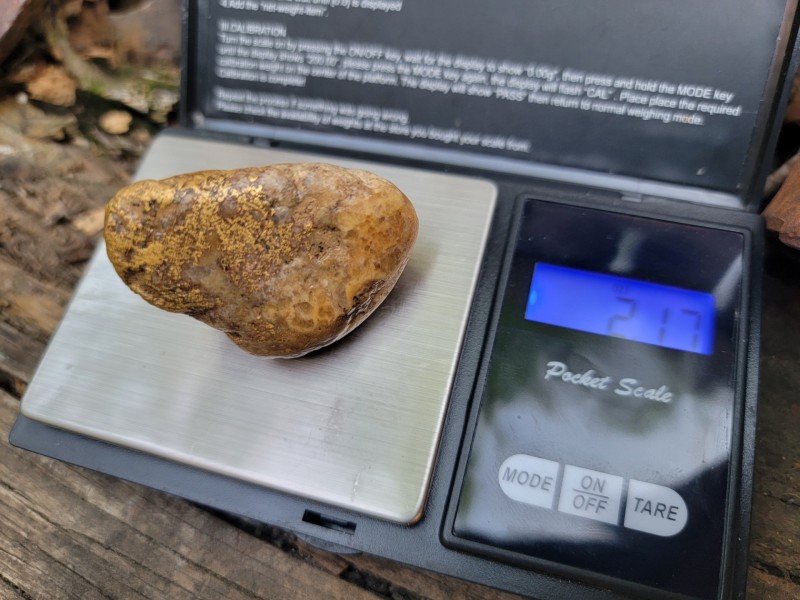
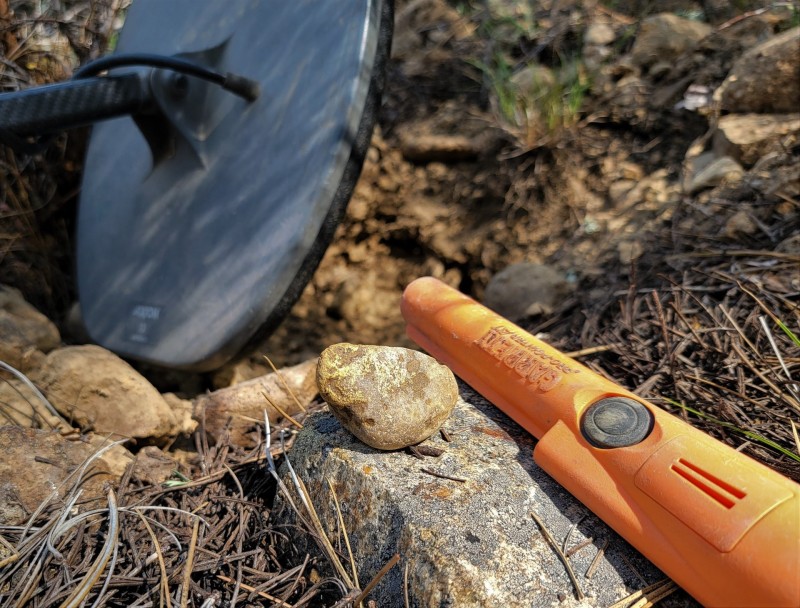
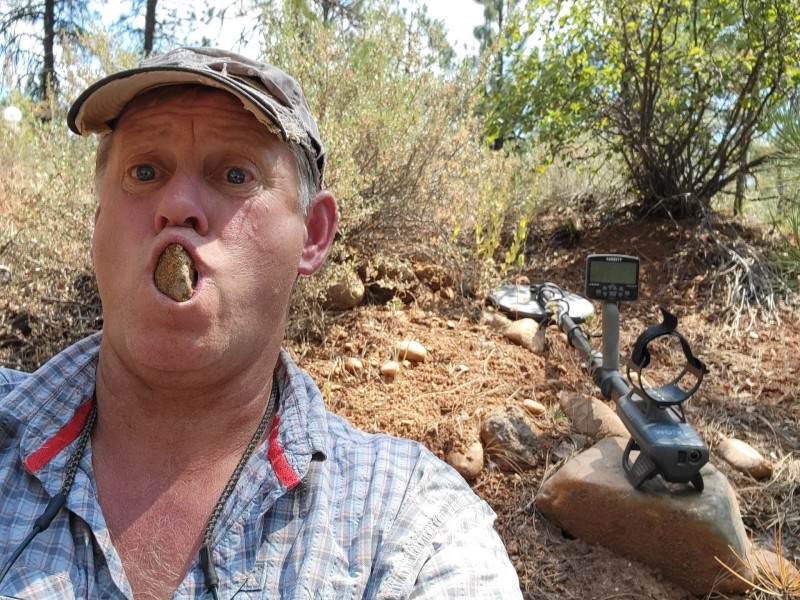
.thumb.jpg.77e4cb5bf39d44bdd2050d2edb7dfdb1.jpg)
